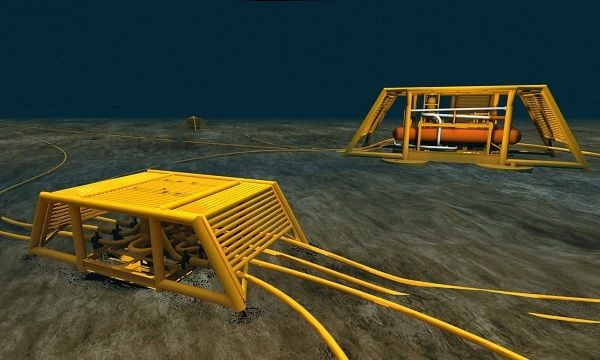Subsea Technology: Oil, Gas And Mining Pinning Future Hopes Under The Sea

The future of oil and gas drilling could soon be nearly invisible from shore. The offshore platform, or oil rig, may soon be rarer and rarer with increased use of subsea technology, which aims to bring nearly every stage of oil production down into the darkest depths of the sea.
"Platforms will not become obsolete,” Shell project manager Mathias Owe told Reuters last January. “But for new developments, if they can be reached from the shore, subsea will be a good challenger, particularly in harsh environments, like the Arctic or high risk areas where you don't want people to operate.”
Putting factories on the seafloor bypasses the problem of freezing temperatures (ice may be on the surface, but the water near the seafloor is still warm enough to avoid freezing) and storms. With fewer workers than traditional oil rigs, the immediate danger to human life is far less. Norwegian oil giant Statoil and other companies have been using elements of subsea technology for decades, but it is only recently that the industry is moving toward bringing the whole outfit down to the seafloor.
If subsea technology proves to be reliable, it could accelerate industry exploration of the Arctic Circle, where experts think that about 13 percent of the world’s undiscovered oil and 30 percent of the world’s undiscovered natural gas lies. The Arctic’s unpredictable weather and harsh climate can wreak havoc -- as Shell experienced when its Kulluk drill rig grounded on New Year’s Eve 2012.
The Kulluk incident was a snapshot of the problems oil companies face with drilling in a harsh, mercurial Arctic climate -- problems that subsea factories might be able to sidestep, according to an article in the October issue of Alberta Oil magazine.
Two of the biggest missing pieces in the subsea technology puzzle are reliable power supply and gas compression systems (without proper compression, the production from a subsea well drops). But those pieces may fall into place within the next few years. Swiss technology group ABB has already been developing power cables for subsea operations. Meanwhile, Statoil thinks its sea-floor compression systems in the Asgard field of the North Sea will be up and running by 2015.
But concerns linger. Subsea factories would be so deep that people couldn’t easily get to them -- companies would be relying mostly on automated technology to keep production flowing. If an accident or spill occurred, what could be done?
After the 2010 Deepwater Horizon accident, it took months for BP just to stem the flow of oil spilling in to the Gulf of Mexico, and the cleanup took even longer. As MacLean's noted in April, there's fear that the industry wouldn't be able to mobilize effectively to fight a similar catastrophe in the Arctic.
The ocean floor also holds bounties for other industries besides oil and gas. Some areas near active hydrothermal vents, many fathoms below the ocean surface, are rich in gold, silver, zinc and copper. The National Oceanic and Atmospheric Administration estimates that there’s enough gold in the ocean -- both dissolved in seawater, and deposited in and on the seafloor -- for every person on Earth to have about nine pounds each.
But many environmentalists and scientists worry that plumbing the ocean depths for metal could have dire consequences. In a 2007 article for Science, University of Toronto at Mississauga earth scientist Jochen Halfar and Environmental Defense Fund scientist Rodney Fujita warned of a potentially wide range of environmental risks from deep-sea mining. Disturbing the sea floor so deeply could lead to sediment plumes, toxic effects on the water column, and disruption of ecosystems both on the seafloor and above.
“There has been little progress toward creation of environmental regulatory systems specific to deep-sea mining by governments with jurisdiction over massive sulfide deposits,” Halfar and Fujita wrote. “Some of these governments have a poor track record of mine oversight and regulation on land, so prospects appear poor for sound regulation of underwater mining.”
© Copyright IBTimes 2024. All rights reserved.





















